The History of Lollards Pit
During the 15th and 16th centuries, people were burned here for their religious beliefs. Though the number of people executed here is not known, there are three mentioned in 1428, half a dozen during the first half of the 16th century and up to 50 burned during the reign of Queen “Bloody” Mary.
The pit was long associated with the church and was held by the Bishop of Norwich. Early chalk drawings were dug out here to provide foundations for Norwich Cathedral, hence the creation of a pit. It was also just outside the city walls, and therefore a good place to dispose of those who had been cast out by the church.
For many years the area was shunned by local people, given its evil connotations. It later became a tannery where wherrymen used to load and unload cargo. It then became a camp ground for gypsies, and finally ended up as the public house you stand in today.
Who were the Lollards?
Put simply, Lollards were anti-clerical. They believed the Church was corrupt in many ways and looked to scripture as the basis for their religion.
The movement was by John Wycliffe, a prominent theologian who was dismissed from the University of Oxford in 1381 for criticism of the Church.
Lollard, Lollardi or Loller was the popular derogatory nickname given to those without an academic background.
Who was John Wycliffe?
John Wycliffe (1320 – 1384) was an English Scholastic philosopher, theologian, lay preacher, translator, reformer and university teacher at Oxford.
His followers were known as Lollards, a somewhat rebellious movement which preached anticlerical and biblically-centered reforms. The Lollard movement was a precursor to the Protestant Reformation.
Wycliffe was also an early advocate for the translation of the Bible into the common language.
He aimed to do away with the existing hierarchy and replace it with the “poor priests” who lived in poverty and were bound by no vows. He was declared a heretic on 4 May 1415 (after his death) and his writings were banned by the Council of Constance.
His corpse was exhumed and burned and the ashes cast into the River Swift which through Lutterworth, Leicestershire.
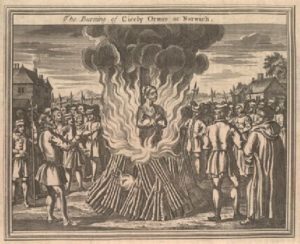
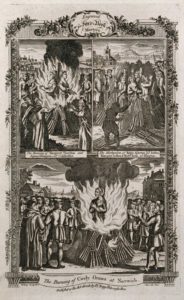
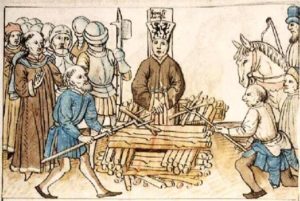
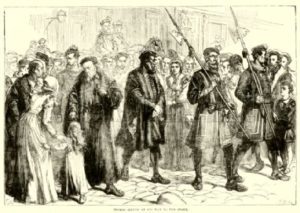
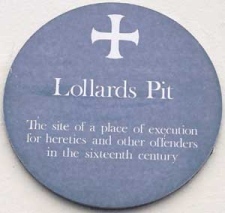

Map of Lollardy's influence. Areas of Lollardy's influence before the death of Richard II are in blue. Areas where Lollardy spread in the 15th century are in red.
Lollards Pit Pub Today
Today, Lollards Pit Pub is a Freehouse, run by manager, Jonathan Barnes.
It has become a traditional “local” pub, adored by its customers, and visited by people from all over the world.
A victim of the burnings, Thomas Carmen was killed in 1558. Distant relatives of his from America and New Zealand have travelled thousands of miles to visit the pub and the city of their ancestor. Coincidentally, neither the American nor the New Zealand relatives knew of each other and happened to meet each other in the pub! It makes the saying “it’s a small world”, all the more true!
We are also host to many local events and gatherings, ghost hunters, historians, bingo players, pub quiz fanatics and ale enthusiasts.
The pub itself has undergone a complete restoration since being taken over by its current owners. The changes are to bring back to traditional and historic heritage of the pub.
We look forward to welcoming you on your visit.
